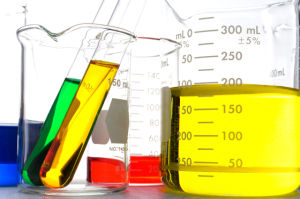SNM Update: Medical cyclotrons could help relieve moly supply crunch
by
Brendon Nafziger, DOTmed News Associate Editor | June 08, 2010

Seeking an alternative
radioisotope production method
Radioisotopes produced by medical cyclotrons are just as good, medically, as those from generators, a study presented at SNM's annual meeting in Salt Lake City finds, suggesting that if production could be efficiently "scaled up" cyclotrons could help ease the isotope supply crunch besetting the industry.
Technetium-99, the daughter isotope of molybdenum-99, is a radioisotope critical to many nuclear medicine exams. Generally, the parent isotope is obtained from a fleet of aging nuclear reactors, two of which -- the High Flux Reactor in the Netherlands and National Research Universal Reactor in Canada -- are offline for repairs until later this summer, causing a worldwide disruption in the supply of medical isotopes.
Some have estimated tens of thousands of patients experienced delays in medically necessary tests because of the supply shortage. Thus, researchers have long hoped medical cyclotrons, a type of particle accelerator, could offer a viable, affordable alternative to depending completely on reactors for radioisotopes.
"Capital investment is minimal compared to a nuclear reactor, and it doesn't give any long-lived radioactive waste," Dr. Francois Benard, an associate professor at the department of nuclear medicine and radiobiology at the University of Sherbrooke in Quebec, told DOTmed news. Unlike research reactors, cyclotrons don't require high-enriched uranium.
"It's more ecological," he said, "and in the long-term more economical."
The researchers, mostly from Sherbrooke, found that cyclotron-made Tc-99m was nearly identical to the generator-made stuff, producing the same biodistribution patterns in rats used for testing.
"Cyclotron- and generator-produced 99mTc-radiopharmaceuticals were shown to be radioisotopically, chemically and biologically equivalent, giving matching images and identical kinetic and biodistribution patterns in animals," the researchers, led by Dr. Brigitte Guerin, a professor of nuclear medicine at Sherbrooke, wrote in their report.
In the experiment, Tc-99m was created in the cyclotron by bombarding the isotope molybdenum-100 with protons. The process takes about six hours.
The study helps allay fears cyclotron-made Tc-99m would be less effective, as previously there was concern that trace amounts of molybdenum left in the Tc-99m could interfere with imaging, explained Benard.
"Assuming we can maintain the target, and assuming we can maintain the extraction efficiency Sherbrooke has shown, it looks as if on the proposed cyclotron we could do 400 to 500 doses a day," Dr. Sandy McEwan, director of oncologic imaging at University of Alberta and past president of SNM, explained to DOTmed. This would supply about 15 to 16 hospitals in an urban area, such as in Edmonton, Alberta where McEwan's university is located.
